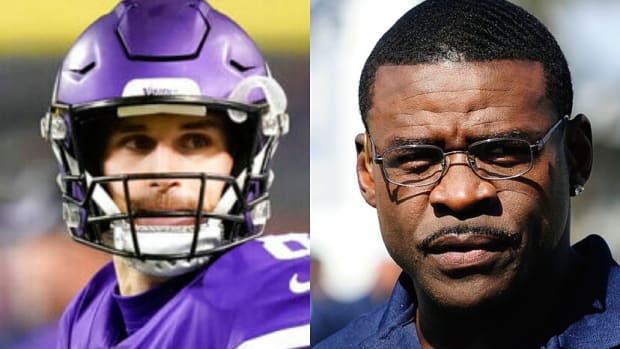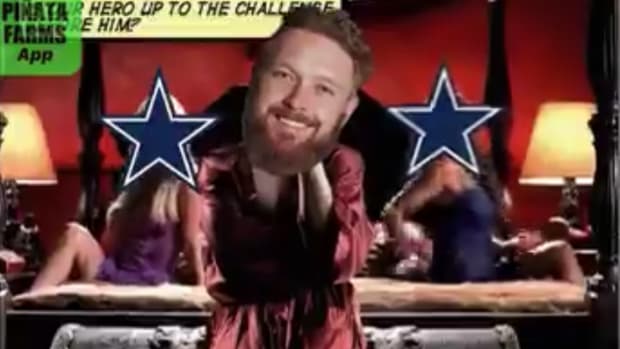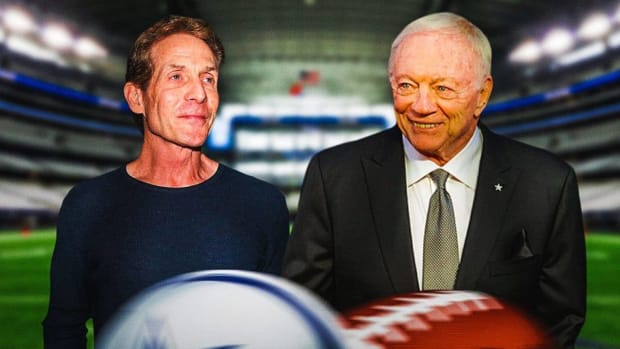Manziel, Cowboys & CEO Advice To Athletes In The NIL 'Wild West'
DALLAS - "My DMs are open for business.''
It's a phrase suddenly posted by many college athletes on social media looking to earn money from their name, image and likeness (NIL) in a suddenly open market.
While Thursday, July 1 was a momentous break from the principle of amateurism that has defined college sports throughout its existence, for INFLCR app CEO Jim Cavale, someone who has prepared years for the moment in sports history, it was more of a dog-and-pony show.
"The reality is, it's the first day of a multi-decade marathon, it's not the end all be all," Cavale, a former college baseball player in Alabama, tells CowboysSI.com. "It reminded me of a press conference when a new coach gets hired. Everyone wants to judge if it was a good decision or not and how many games he will win or lose ... I don't want to call it overhyped because it's a big deal for the student-athlete but July 1st was a marketing event."
In case you somehow missed it, as of Thursday, July 1, all NCAA athletes will be able profit from their name, image and likeness after the governing bodies from all three NCAA divisions voted to approve the interim policy - which will be enforced until federal legislation passes or new NCAA rules are introduced.
Poof ... A brand new, big market was born. If every student athlete was to make a small amount of money, that could equal hundreds of millions of dollars.
READ MORE: BREAKING: Dallas Cowboys Will Be On HBO's 'Hard Knocks'
There are two levels of advice here. Athletes can learn from the likes of the Dallas Cowboys, who have mastered the art of marketing. Their latest bonanza? Dak Prescott and the 'Boys' will be the NFL team featured at training camp on HBO's "Hard Knocks'' TV show. On another level, there is the reality that Cavale can help with - because the likelihood that every student-athletes cashes in is slim, making the market smaller than some may project.
"The first year of NIL is going to expose the range of the large pendulum swing of the business," Cavale said. "The swing comes from the initiative from student-athletes. It's no different than playing time. Does everybody get the same amount of playing time? You'll get out what you put in."
Maybe it would be wise to listen to Texas A&M icon Johnny Manziel, who did not get to cash in, but who is now giving away advice (ironically, for free) on Twitter.
READ MORE: Texas A&M's Johnny Manziel & 'NIL' Rule: Aggies QB Would've Broken The Bank
For some, the potential income could be life-changing. For example, twins Haley and Hanna Cavinder of Fresno State’s women’s basketball team total 3.3 million TikTok and 515,000 Instagram followers between them. The pair now endorse Boost Mobile, which took out billboard space in Times Square in New York City to celebrate the milestone.
The tricky part? Why this new era is a bit like the Wild West? While college athletes can now profit from sponsorships and endorsements, they still have to adhere by NIL rules in their specific states. If an athlete plays for a program in a state without an NIL law - Colleges and universities will decide whether or not certain activities are in accordance with state laws.
"The reason there is merit to calling it the 'Wild West' is because there is not one blanket set of rules, like there is for just about everything else when it comes to student athletes," Cavale said.
So, 10 states with their own legislation, plus 40 more states with hundreds of schools that their own set rules... Sounds messy, compliance wise. Similar to how programs build new facilities, revamp uniforms and boast trophies... schools will try to take advantage of NIL for a recruiting edge to make their schools the most attractive for the top athletes.
Could the University of Oregon add a new Nike 'build-your-brand' building for athletes to their already over-the-top facilities? Would the University of Texas consider adding instagram handles to team jerseys? When it comes to recruiting advantages, my bet is that colleges will push the boundaries to add perks and create the best student-athlete experience.
It is partly why over 1,100 teams, 140+ D1 schools, have hired INFLCR to help student-athletes to establish, manage, and monetize their NIL business through the INFLCR app in a compliant way. Athletes receive instant content from app (from institution’s media staff and external media partners) to share on their personal social media channels - photos and videos at their fingertips the minute they exit the field, court, swimming pool, etc. Athletes also receive personalized reporting to track their social media follower growth and social media engagement metrics.
The INFLCR verified software, launched in April 2021, takes it a step further for athletes to manage their NIL business with a compliance benefit to allow school staff visibility to oversee those opportunities while maintaining the athlete's eligibility. The app also helps connect athletes with a growing list of marketplace partners, brands and fans. Want to get paid for an appearance on Cameo or create a t-shirt product? It's all apart of it. If an athlete wants to further educate, there is guidance from industry leaders and athletes.
This generation of student-athletes are almost experiment guinea pigs. No one is guaranteed money for their NIL - there are 500,000 student-athletes and only one has the highest hype to win the Heisman Trophy (Spencer Rattler at +800 odds by FanDuel). However, the opportunity for athletes to take initiative to create and cash in doesn't just apply to the Trevor Lawrences of the world or the TikTok-famous twins.
"Yesterday, not a bunch of kids woke up with $100,000 in their bank account because of the new rule," Cavale said. "For kids who want a six-figure business, it is going to be hard.
"The ordinary story is 'I made a few thousand extra bucks.' The extraordinary story is 'I build a six-figure business while I was in college.'"
Cavale has advice for student-athletes who are looking for NIL wins, long-term. The best way to leverage NIL business is through a multi-dimensional inventory approach.
"Educate yourself on all the different ways you can use your NIL to make money," Cavale said. "Create a strategy with a focus of 2-3 categories. Yes, use social media to promote a brand but also use social to tell an interesting story with no money involved because it makes an athlete more attractive to a brand."
More avenues to explore: "Appearances; Starting a sports camp; Doing a naming rights deal in your hometown, so it's named after you; Building a product/merchandise with a logo that has a story behind it; Philanthropy, organizing other student-athletes to a cause."
Cavale encourages student-athletes to evolve, see what works and what doesn't. Maybe most importantly, network with other student-athletes, ask questions to learn with each other.
In other words, "DMs open for business" isn't the NIL story that will make the headlines or the bank account flourish.




